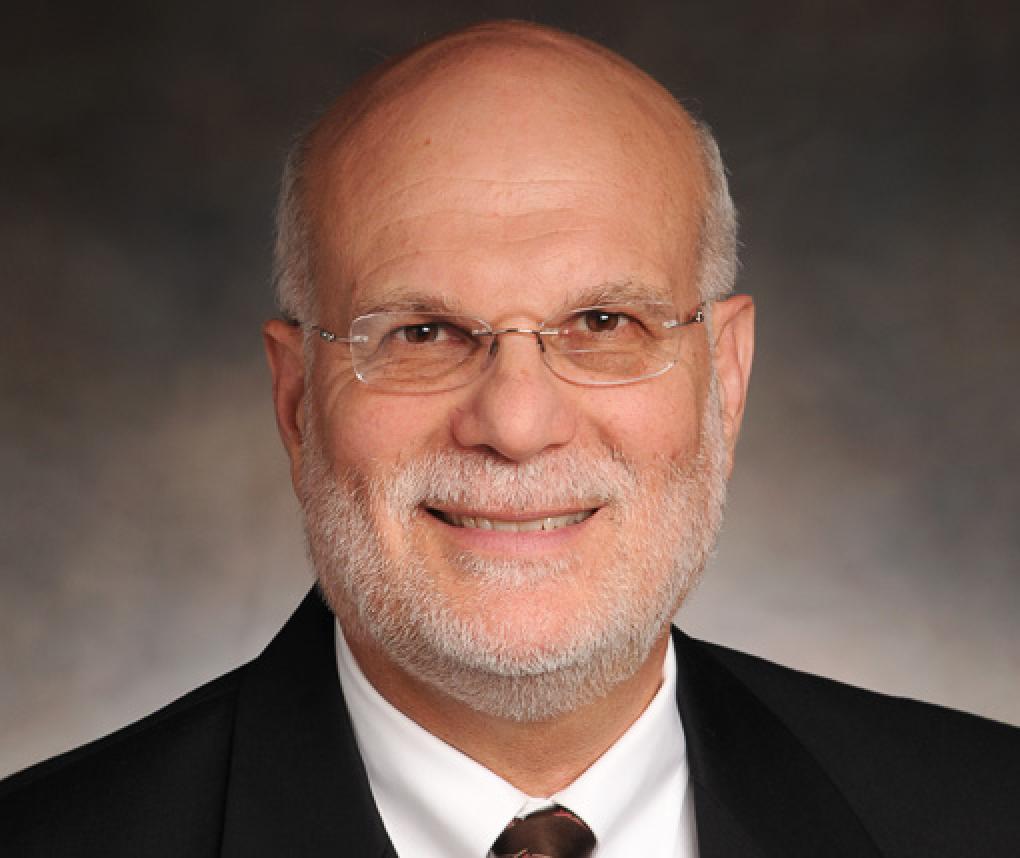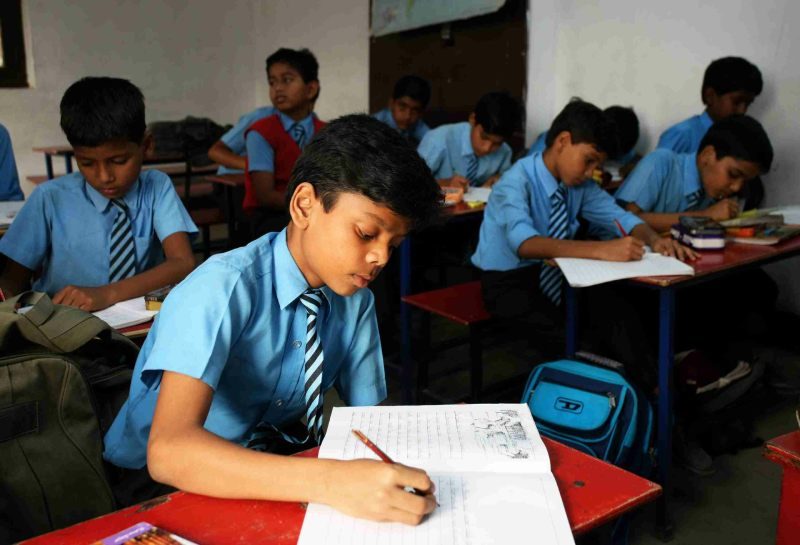 Go Back
Go BackShare
“In order to progress, systems have to care about the learning levels of all children”: Luis Crouch(Part 2)
By Priyanka Kumar
Sep 27, 2019
Luis Crouch on how to make early grade programs work (Part 2)
In the first part of our interview with Luis Crouch, we asked him about how the critical skills of foundational literacy and numeracy can be defined and measured in a manner to help achieve quality learning.
In this second and final part, the Senior Economist at RTI’s International Development Group shares his learnings on what makes early grade programs work, and what is required for them to be able to achieve effective impact at scale.

CSF: You have said that focusing on the ‘tail’ or the lowest-performing children can help address the learning crisis. How so?
Luis Crouch: Countries can take two possible pathways to go from very low overall levels of performance to at least average or middle levels – one would be to skew the distribution by creating more ‘geniuses’, that is, by focusing on those students who are already at the top of the class and are easier to teach; the other is by taking care on those who are learning the least and thus, are at the bottom of the class, or at the bottom in whole schools or districts where performance is very low. Evidence is quite strong that countries that have successfully improved their average performance (as measured by international learning assessments) from the lowest to middling levels, have done so by bringing up the results of the most vulnerable children and making sure that there are no children or very few children left who are basically learning nothing. In short, in order to progress, systems have to care about the learning levels of all children.
Countries that have successfully moved from the lowest to middling levels of performance, have done so by making sure that there are no children left who are basically learning nothing.
CSF: Drawing from your multi-country experience with RTI and others, according to you, what makes early learning programs successful?
Luis Crouch: To be successful, early grade programs need to have the right components.These include:
- Adequate support and coaching for teachers in the classroom. This is important as teachers should be observed in their classes by knowledgeable coaches once or twice a month, rather than taken out of the classroom and given theoretical training (though the latter is also necessary).
- Good printed teaching-learning materials that are very tightly synchronized with the teacher’s lesson plans. The lesson plans themselves have to be well-orchestrated – we are discovering that leaving lesson planning to teachers that are not superbly trained is not very reliable.
- Good assessment techniques that can measure whether children are learning what they should and doing well, as mentioned earlier.
- Teaching children to read in their own language in the early years, and keeping dedicated time to actually teach the mechanics of how to read in that language, instead of just teaching grammar and other such things.
The last point is important because most teacher training programs don’t actually prepare teachers on how to teach the actual skill of reading. A lot of these programs are often highly philosophical and tend to underemphasize the pedagogical aspect of teaching something as important and yet as specific as reading. Reading requires ‘direct instruction’ by the teacher. A child cannot discover how to read on their own in the way that a child who already knows how to read can develop a love for literature by understanding the meaning of a novel.
In many countries, the curricular expectations from children are driven by what I call an ‘urban, upper middle-class bias’, because what such children can do is often much more than what those from rural areas can do. Urban children come from a literate environment, where they are surrounded by print in the form of books, newspapers, etc. and are read to by others. In rural areas, we have to start with the notion that a child may never have even seen a book, so they first need to understand something as basic as what is the front of the book and which direction to read in. It helps if the government can provide these children at least one, if not two, years of free pre-primary schooling prior to class 1, so that we can start early and provide them with the kind of support that urban children get at home.

CSF: How can we teach early grade reading to children who come from diverse socio-economic backgrounds and often speak different languages, especially those who are first-generation learners? How does the system deal with such complexities?
Luis Crouch: This is a difficult and often controversial issue, but in my understanding, children really should be taught to learn to read in the language that they speak and think in at home, at least for the first few years. It is an unimaginably difficult task for a child to learn to read in a language that they don’t speak. For example, how can a child learn to read the word H-E-N, if they’ve never even heard it before and have no mental association between its sound and what it actually refers to.
Of course, one has to temper the pedagogical with the practical and the political. There are urban areas, like in India, where they may be some 10 different languages in a classroom. In that case, one can try different options. Sometimes, two or three of the languages are fairly similar or belong to the same family, so you can pick the one that is closer to being a root language. That would still be a lot easier than teaching in an unfamiliar language like English.
We can also make use of technology, from the unfashionable interactive radio to podcasts on smartphones, to provide 15-minute chunks of lessons in all the languages of the area. These could be accompanied with simple but tightly integrated materials in the local languages, because at the end of the day, reading is about translating print into sound and meaning.
Sometimes, however, there can be an impossible situation where a classroom has 15-odd completely unrelated languages with absolutely nothing in common. In that case, you may have to bite the bullet and teach in whatever is a common language for that state.
Most teacher training programs don’t actually prepare teachers on how to teach the actual skill of reading. A child cannot discover how to read on their own
CSF: Interestingly, in Kenya’s Tusome national literacy program, the results from the scale-up are even better than the pilot. This is completely different to Indian experience, where small-scale interventions often fail when implemented on a large scale. What can we learn about scaling interventions successfully?
Luis Crouch: I can pick out some learnings based on how RTI’s Benjamin Piper ran the Tusome program. First, make sure that the inputs and recurrent costs required for the intervention, with the exception of research and development costs, are at an intensity and price point that the country’s government can afford.
Second, keep things reasonably simple, so that governments feel that it is possible to continue with the program even after the NGO supporting them pulls out. In fact, the focus of the scale-up can be the goal, such as children should be able to read by the end of class 3, which can be achieved by doing things that do not necessarily require the NGO’s specific intervention but are more generic.
Lastly, ensure well-designed, robust evaluations as they can provide overwhelming empirical evidence that the intervention is working. With early grade reading, in fact, the advantage is that the results can be easily seen by schools and parents when children are able to read – this can then encourage other schools to become part of the program. Also, give the pilot enough time so that the measures are honed properly and the results become visible – the pilot for the Tusome program lasted five years.
If we can make learning or even the lack of learning very visible, then people can put pressure on the government to ensure that children are learning.
CSF: How can we support the government in building their capacity to own and implement foundational learning programs in a sustainable manner?
Luis Crouch: The role of the NGO is to set an example for the system to follow once they pull out. Another way is to work directly with the stakeholders in the system right from the beginning, at the pilot stage, instead of employing non-government people. This way they are involved from the beginning and can ‘learn by doing’, in addition to the training they receive, meaning their skills are built up organically and will continue even after the intervention ends. Often, scale-ups don’t replicate the success of the pilots because the government isn’t militant enough in implementation and doesn’t pay enough attention to quality control, fidelity of implementation, etc.
It may also help if there is an insistence from the civil society that children need to learn, just as previously there was a demand to open more schools. If we can make learning or even the lack of learning very visible, then people can similarly put pressure on the government to ensure that children are learning. Of course, at the same time we also need to provide evidence that it is doable, so that the government is assured that the demand can be met. Officials tend to be fearful of accepting challenges if they don’t know that the challenges can be met. In some sense, a good role for NGOs is to take away that fear through very convincing demonstrations of approaches that have great results and are sustainable.
The first part of the interview talks of how the critical skills of foundational literacy and numeracy can be defined and measured in a manner to help achieve quality learning.
Keywords
Authored by
Priyanka Kumar
CSF
Share this on
